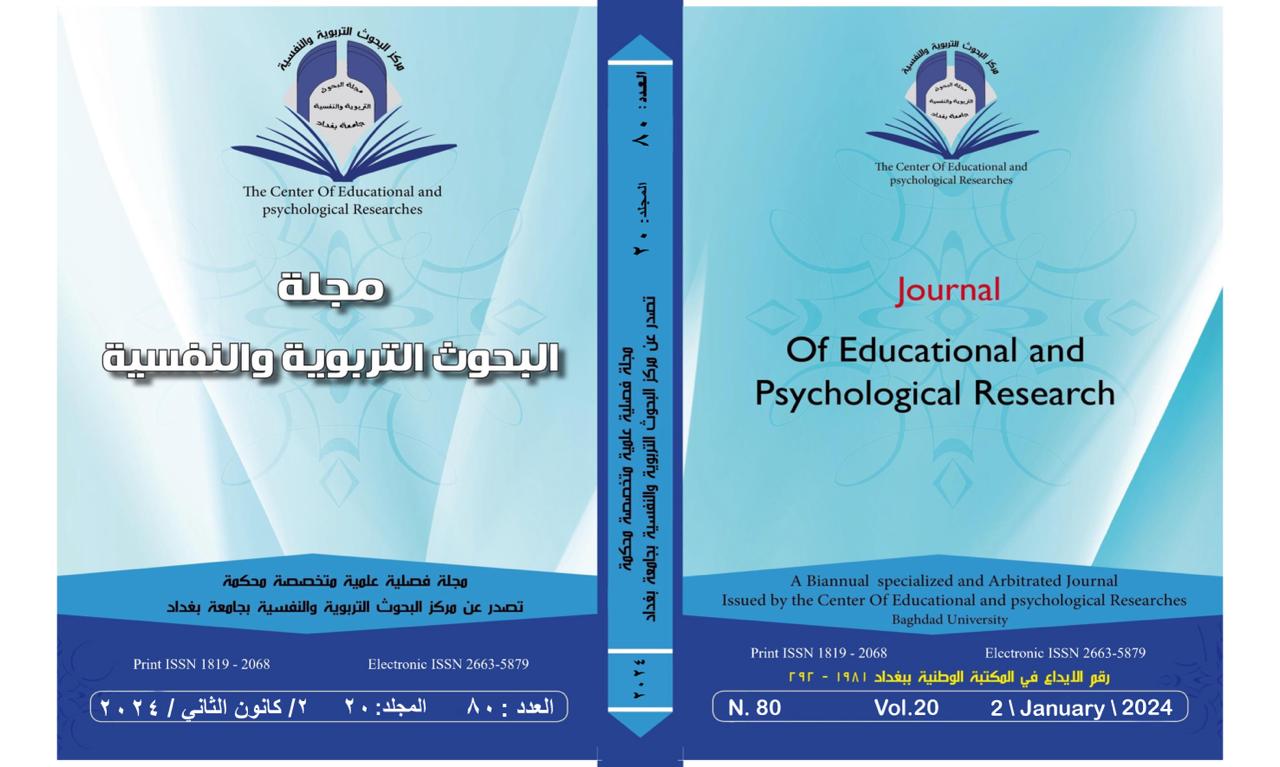Hopeful Thinking of Postgraduate Students
Keywords:
hopeful thinking, postgraduate studentsAbstract
The current research aims to identify hopeful thinking among postgraduate students as well as determine if there is a significant difference in hopeful thinking according to the variables of gender (males and females), specialization (scientific, humanities), and stage of study (master’s, doctorate). The research sample consists of 500 male and female postgraduate students at the University of Baghdad who were chosen randomly in terms of gender, faculties (scientific and humanities), and level of education (master’s and doctorate) for the academic year 2022-2023. To achieve the objectives of the current research: The two researchers developed a scale of hopeful thinking based on the theory of Snyder (1983) and previous studies that dealt with hopeful thinking. The scale consisted of 46 items distributed into two dimensions: the strength of thinking and the paths of thinking. It was exposed to a committee to verify the validity, which resulted in deleting 16 items, so the number of items in the Hopeful Thinking Scale became 30 items in its final form, followed by five alternatives, which are (always (definitely), often (mostly), a little, rarely (to an extent), what, never). The results indicated that the current research sample has hopeful thinking. There are no significant differences in hopeful thinking among the research sample according to the gender variable (males, females), the specialization variable (scientific, humanities), and the academic stage variable (master’s, doctorate). There are no significant differences in hopeful thinking in the interaction between the variables of gender, specialization, and stage of study.


